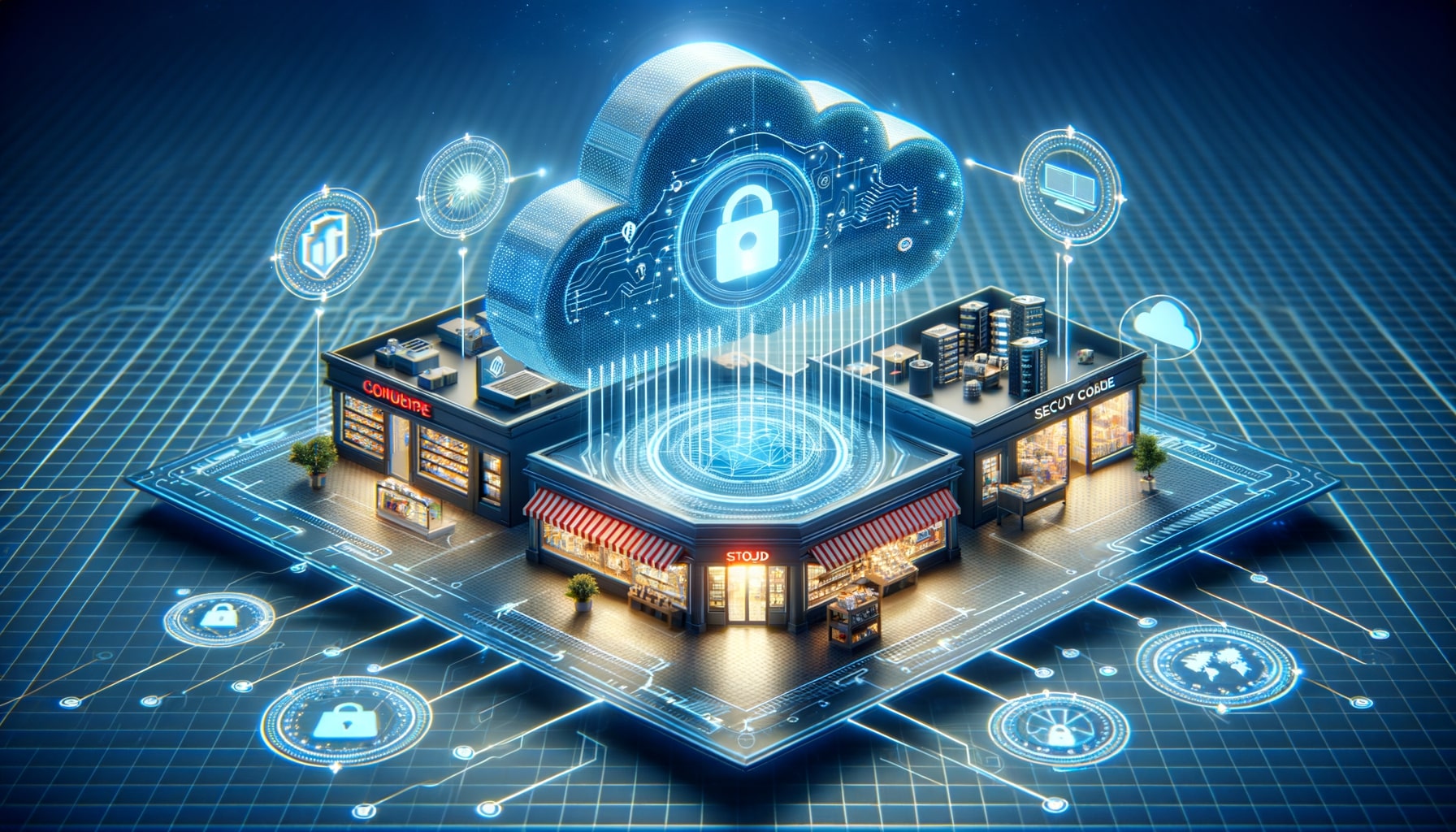Cloud Credit Card Processing vs. Traditional Systems
In today’s digital age, credit card processing has become an essential part of running a business. Whether you own a small retail store or an e-commerce website, accepting credit card payments is crucial for attracting customers and increasing sales. Traditionally, businesses relied on physical credit card terminals and point-of-sale (POS) systems to process transactions. However, with the advent of cloud technology, a new method of credit card processing has emerged – cloud credit card processing.
In this article, we will compare cloud credit card processing with traditional systems, exploring their benefits, security measures, cost comparison, integration and scalability, user experience, and factors to consider when choosing the right solution.
Benefits of Cloud Credit Card Processing
Cloud credit card processing offers several advantages over traditional systems. Firstly, it provides businesses with the flexibility to accept payments from anywhere, anytime. With a cloud-based solution, merchants can process transactions using their smartphones, tablets, or computers, eliminating the need for dedicated hardware. This convenience allows businesses to accept payments on the go, whether at a trade show, a pop-up shop, or even a customer’s doorstep.
Secondly, cloud credit card processing offers seamless integration with other business tools and software. Many cloud-based payment processors provide APIs (Application Programming Interfaces) that allow businesses to integrate their payment systems with their existing POS systems, accounting software, inventory management tools, and more. This integration streamlines operations, reduces manual data entry, and improves overall efficiency.
Advantages of Traditional Credit Card Processing Systems
While cloud credit card processing offers numerous benefits, traditional systems still have their advantages. One of the main advantages is the familiarity and trust associated with physical credit card terminals. Customers are accustomed to seeing and using these terminals, which can instill a sense of security and confidence in the payment process. Additionally, traditional systems often offer faster transaction speeds, as they do not rely on an internet connection for processing.
Security Measures: Cloud vs. Traditional Credit Card Processing
When it comes to security, both cloud credit card processing and traditional systems have their own measures in place. Cloud credit card processing providers typically employ advanced encryption techniques to protect sensitive customer data. They also adhere to strict compliance standards, such as the Payment Card Industry Data Security Standard (PCI DSS), to ensure the highest level of security.
On the other hand, traditional credit card processing systems rely on physical security measures. These systems often require merchants to store physical copies of credit card receipts, which can pose a risk if mishandled or lost. However, traditional systems also offer the advantage of being less susceptible to cyberattacks, as they do not rely on internet connectivity.
Cost Comparison: Cloud Credit Card Processing vs. Traditional Systems
When considering the cost of credit card processing, both cloud-based and traditional systems have their own pricing models. Cloud credit card processing providers typically charge a monthly fee, transaction fees, and sometimes additional fees for features like integrations or advanced reporting. However, these costs are often more transparent and predictable, allowing businesses to budget accordingly.
Traditional credit card processing systems often involve upfront costs for purchasing or leasing physical terminals, as well as ongoing fees for maintenance and support. Additionally, traditional systems may charge higher transaction fees, especially for businesses with lower transaction volumes. However, it is important to note that the overall cost will vary depending on the specific needs and size of the business.
Integration and Scalability: Cloud vs. Traditional Credit Card Processing
One of the key advantages of cloud credit card processing is its ability to integrate with other business tools and scale as the business grows. Cloud-based payment processors often offer APIs that allow businesses to connect their payment systems with various software applications, such as accounting software, customer relationship management (CRM) systems, and e-commerce platforms. This integration enables businesses to streamline operations, automate processes, and gain valuable insights from consolidated data.
Traditional credit card processing systems, on the other hand, may have limited integration capabilities. While some systems offer integrations with popular POS systems or accounting software, the options are often more limited compared to cloud-based solutions. Additionally, traditional systems may require manual data entry and reconciliation, which can be time-consuming and prone to errors.
User Experience: Cloud Credit Card Processing vs. Traditional Systems
The user experience is a crucial aspect of credit card processing, as it directly impacts customer satisfaction and the efficiency of business operations. Cloud credit card processing offers a user-friendly experience, with intuitive interfaces and easy-to-use mobile apps. Merchants can quickly process transactions, generate receipts, and access real-time reporting and analytics from any device with an internet connection. This convenience not only improves the customer experience but also enables businesses to make data-driven decisions and monitor their performance effectively.
Traditional credit card processing systems also provide a straightforward user experience, with physical terminals that are familiar to both merchants and customers. However, these systems may require additional steps for manual reconciliation and reporting, which can be time-consuming and prone to errors. Additionally, traditional systems may lack the real-time reporting and analytics capabilities offered by cloud-based solutions.
Choosing the Right Solution: Factors to Consider
When choosing between cloud credit card processing and traditional systems, there are several factors to consider. Firstly, businesses should assess their specific needs and requirements. For example, if the business operates primarily online or requires flexibility for mobile payments, a cloud-based solution may be more suitable. On the other hand, if the business relies heavily on physical retail locations and prefers the familiarity of traditional systems, a physical credit card terminal may be the better choice.
Secondly, businesses should consider their budget and cost considerations. Cloud credit card processing often offers more transparent pricing models, with predictable monthly fees and transaction costs. Traditional systems may involve upfront costs for purchasing or leasing physical terminals, as well as ongoing maintenance and support fees. Businesses should evaluate their transaction volumes and compare the overall costs of each option to make an informed decision.
Lastly, businesses should assess the integration capabilities and scalability of the chosen solution. Cloud credit card processing offers seamless integration with various business tools and software, allowing for streamlined operations and improved efficiency. Traditional systems may have limited integration options, which can hinder the ability to automate processes and gain valuable insights from consolidated data. Additionally, businesses should consider their growth plans and ensure that the chosen solution can scale as the business expands.
Frequently Asked Questions (FAQs)
Q.1: What is cloud credit card processing?
Cloud credit card processing is a method of accepting credit card payments using cloud-based technology. It allows businesses to process transactions using smartphones, tablets, or computers, eliminating the need for dedicated hardware.
Q.2: How does cloud credit card processing differ from traditional systems?
Cloud credit card processing offers the flexibility to accept payments from anywhere, seamless integration with other business tools, and real-time reporting and analytics. Traditional systems rely on physical credit card terminals and may have limited integration capabilities.
Q.3: Is cloud credit card processing secure?
Yes, cloud credit card processing providers employ advanced encryption techniques and adhere to strict compliance standards, such as PCI DSS, to ensure the highest level of security.
Q.4: Are traditional credit card processing systems more secure than cloud-based solutions?
Traditional systems offer physical security measures but may be susceptible to risks associated with mishandling or losing physical copies of credit card receipts. Cloud-based solutions have advanced encryption and security measures in place to protect sensitive customer data.
Q.5: Which option is more cost-effective, cloud credit card processing, or traditional systems?
The overall cost will vary depending on the specific needs and size of the business. Cloud credit card processing often has transparent pricing models, while traditional systems may involve upfront costs for purchasing or leasing physical terminals.
Conclusion
In conclusion, both cloud credit card processing and traditional systems have their own advantages and considerations. Cloud credit card processing offers flexibility, seamless integration, and real-time reporting, making it suitable for businesses that prioritize mobility and efficiency. Traditional systems provide familiarity, faster transaction speeds, and physical security measures, making them a preferred choice for businesses with physical retail locations.
When choosing the right solution, businesses should consider their specific needs, budget, integration capabilities, and scalability requirements. By carefully evaluating these factors, businesses can make an informed decision that aligns with their goals and enhances their credit card processing capabilities.










